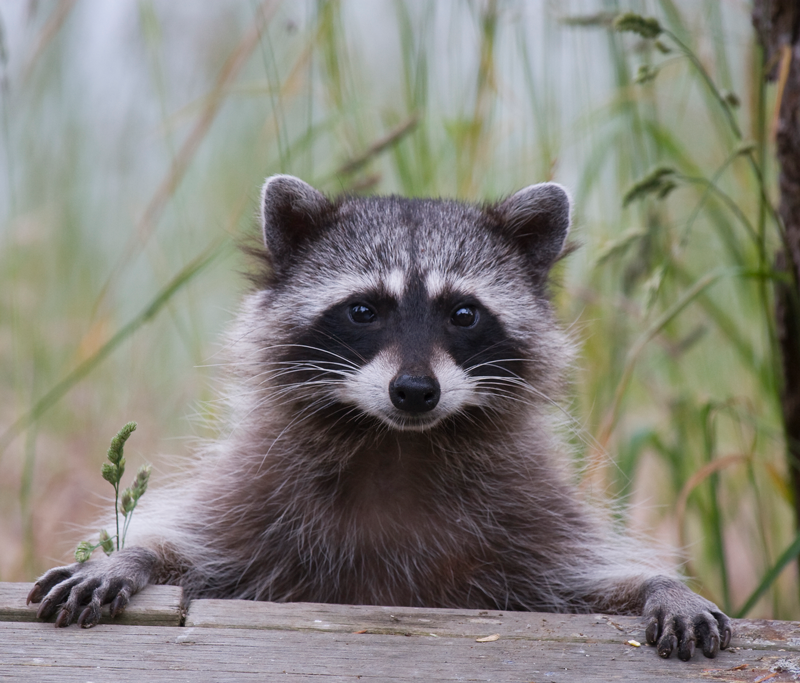Posted: February 25, 2021
For the last year, we’ve been getting used to masks. In the natural world, there’s an animal who is born with a mask on—the raccoon. Besides willingly masking up, there are a few other lessons humans can learn from this animal neighbor.

Raccoons have been described as curious, persistent, intelligent, inquisitive, adaptable, resourceful, and adventurous. They are fearless learners and able to thrive outside their "normal" environment. Stan Garrett, professor at The Ohio State University, says unlike many other animals who hesitate when they encounter something new, raccoons are attracted to new, novel objects--things that are not normal in the landscape (CBS News 2020). After helping to design a raccoon-proof garbage can, Suzanne MacDonald, a researcher from York University in Toronto, celebrated that a raccoon figured out how to get into it. She reflected that the animal's persistence will serve it well and allow it to survive in an urban environment and each generation of its children will pass on those life-giving traits of curiosity and persistence. When asked what we can learn from raccoons, she replied, "Don't give up." Eventually you will figure out the answers that you are pursuing, motivated by curiosity (Karabin 2019).
 Curiosity and a fascination with shiny things are also traits of the male bower bird. Bower birds are notorious for building elaborate nests and accessorizing them with all sorts of found objects. These birds know how attractive other people's discards can be!
Curiosity and a fascination with shiny things are also traits of the male bower bird. Bower birds are notorious for building elaborate nests and accessorizing them with all sorts of found objects. These birds know how attractive other people's discards can be!
So as early childhood professionals, how can we encourage these raccoon-like, bower bird-like traits in children? One way is to welcome the exploration of found objects. Each time an adult shows wonder in an unusual item or pauses when a child is distracted by something, they build the child's curiosity and willingness to wonder. Fourteen-year-old Texas scientist Anika Chebrolu knows how important it is to both be curious about something and to persist in seeking an answer. According to Curious.com (2020), she tested over 698 compounds, finally identifying a binding molecule that would bind to a protein on the COVID-19 virus. For those research efforts, Chebrolu was designated as the 2020 3M Young Scientist of the year and awarded $25,000.
In order to nurture curiosity and persistence in young children like Chebrolu has, build in extra time for "deep noticing"--encouraging children to pause, look, sketch, photograph, and dissect. Allow them to use found objects in unexpected, even silly ways. Try to say "yes" more than "no." Allow children to take things apart and praise them for putting things together and building. Often it's in the process of taking things apart that children discover how things work, and they use that new knowledge to solve problems!
If you'd like to learn more about how to use found objects in your ECE/OST curriculum, check out the newly launched course, "Finding Wonder in Found Objects."
You and the children in your care might enjoy this recent news story where animal researchers share more of their fascination and enjoyment in studying the curious raccoon.
References
- CBS News. 2020. "Are we making raccoons smarter?"
- Curious.com. 2020. "All's fair in science and cures."
- Karabin, Keith. 2019. "Let's all be unstoppable raccoons."

